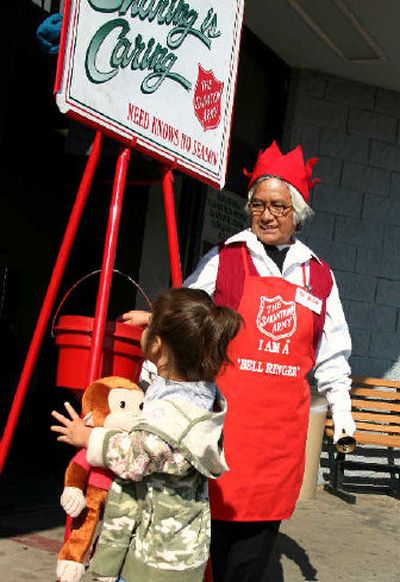December is big for giving, but charities plan year-round

Donating to charity at the end of the year is a tradition for countless Americans.
Some folks rush to beat the deadline for same-year tax deductions. Some don’t think of making contributions until seasonal reminders arrive in the mail. Others simply feel more charitable during the holidays or have waited to see how much they can afford to give.
Charities recognize those inclinations. But while they often launch year-end pushes for contributions, they also try to persuade givers to spread out their offerings.
“It sure would be great if you had a giving plan, as a donor, lined up in January so that you knew that you were going to do it on a monthly basis, and you let your charity know,” said Jo Sullivan, senior vice president of development and communications for the American Society for the Prevention of Cruelty to Animals in New York. “That really, definitely helps with planning programs.”
The ASPCA and numerous other charities, including the Salvation Army and the American Red Cross, have set up payment plans to encourage monthly or quarterly gifts. But Sullivan said groups know that donors may stick with a late lump sum.
“We understand that consumers really give in the last quarter of every year,” she said. “So we expect and we budget to make 40 percent of our operating budget in the last three months of the year.”
While it’s difficult to track how many Americans delay donating, those who study philanthropy sense that charities amplify the call for contributions around the holidays.
Giving “probably does increase at the end of the year, and one of the primary reasons is … because fundraising organizations increase their level of fundraising,” said Tim Seiler, director of public service and the Fund Raising School at the Center on Philanthropy at Indiana University. “So that’s a direct cause and effect.”
Finn Lane, 40, of San Mateo, Calif., makes her cash donations at year’s end, when the appeals arrive in the mail.
“I get reminded when I see these envelopes come in,” she said.
It’s the spirit of the season for Dan Rector, 28, of Seattle: “I just give around Christmas, which is kind of odd, since I’m not religious at all. … It must be the same reason I put up a tree, which most guys living alone don’t do.”
Michael Angeles, 35, of Brooklyn, N.Y., defers giving for practical reasons. “The timing around the end of the year helps me because I know how much I can afford to give, after I know if there is a (work-related) bonus,” he said.
And contributing by Dec. 31 means that Angeles, like other donors who itemize their tax returns, can deduct the gifts when preparing that year’s taxes.
The Internal Revenue Service cares only that a contribution is deducted for the year when it was made. But financial advisers say the best strategy for individuals depends on various factors, including cash flow and values.
Some forms of giving, such as donating appreciated stock, require at least some advance planning.